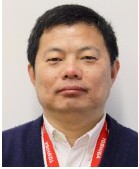Bluetooth chip is another hot spot in wearable devices
The rapid development of wearable devices is mainly due to the perfect storm formed by low-power wireless connectivity, sensor technology, big data, cloud services, voice user interface and mobile computing capabilities, which is destined to revolutionize the future of mobile terminals. One of the most important is the need for low-power wireless connectivity technology, which allows Bluetooth communications, known for low-power transmission, to be quickly imported into wearable devices. Bluetooth has always played an important role in smart mobile devices. Connecting devices such as headphones, mouse and keyboard, and speakers through Bluetooth has brought us great convenience. In particular, the latest Bluetooth 4.1 standard released by the Bluetooth Technology Alliance has improved data transmission and catered to the needs of wearable devices. This is a huge market opportunity for Bluetooth chip manufacturers. Especially with the support of mainstream operating systems such as Apple, Microsoft, BlackBerry and new Google, it also makes it easier for developers to develop smart accessories equipped with Bluetooth systems. Bluetooth transmission chips will be quickly imported into wearable smart accessories. According to HIS Low Energy Wireless Intelligent Services, more than 7 million Bluetooth Smart chips are used in sports and fitness equipment in the first half of 2013 alone. Overall, due to the strong application potential of Bluetooth Smart in different fields, it is expected that the annual shipment of Bluetooth Smart chips will grow by more than 10 times by 2018. In the wake of the wearable device, the recent development of Bluetooth Smart devices is growing rapidly, from international brands such as Apple, Samsung, Nike, Adidas, Kwikset, to rising stars such as Tethercell, Hipkey, 94Fifty and Pebble, from football and tennis shoes. , smart watches, keyless start function, continue to care, mobile medical equipment, fitness, etc., can see the introduction of low-power Bluetooth technology. Toshiba Semiconductor Technology Senior Manager Huang Wenyuan Toshiba Semiconductor's senior manager of the technology department, Huang Wenyuan, revealed that Toshiba has developed Bluetooth chip products. Now Bluetooth 4.0 and Bluetooth 3.0 products have been released from the library, used in some sports equipment and health care equipment, and help the equipment in power consumption. A substantial reduction has been achieved. In response to the outbreak of wearable devices, Toshiba is now reviewing the scope of support for Bluetooth 4.1 product features, with the goal of sampling in Q3 2014 to help wearables seize market opportunities. On wearable devices, power consumption and volume are two important considerations. In particular, power consumption, wearable device equipment is usually powered by batteries, which requires high efficiency of power supply. Toshiba Semiconductor's Bluetooth chip has an advantage in power consumption, which can greatly improve the efficiency of use. Wireless data communication is achieved up to 20mW. According to Huang Wenyuan, in March 2014, Toshiba BLE-ICTC35667FNG plans to have engineering samples. The TC35667fng has a maximum operating current of less than 6MA and a deep sleep current of less than 1uA. Compared to competitor products, the TC35667FNG can be called a true low-power IC. For example, if you use the TC35667FNG on a device that uses a CR2032 coin cell battery, you can replace the battery for two years if you have data communication once a day. Huang Wenyuan said that Toshiba Semiconductor's new Bluetooth chip has the following four major advantages: 1) Low consumption current can extend the working time of button battery equipment; 2) High compatibility with existing smart terminals such as smartphones and tablets; 3) An all-in-one product that provides Bluetooth and near field communication NFC-TAG; 4) Provide a total solution including MCUs with a high market share in healthcare; In the future, Toshiba Semiconductor plans to use the low-power BLE products and the overall solution of traditional MCUs in the healthcare market to gain more market share. Featured by its wide flat surface with top bend, T18 generates lighting with astonishing uniformity, covers all the colors we offer and all functions. All types of IP68 mold injection connectors and DIY connectors are also available for this size. This size can be widely designed for façade lighting, pool lighting, architecture lighting design and etc. Chasing Neon flex Tes Lighting Co,.Ltd. , https://www.neonflexlight.com
—— This article is selected from the February issue of the electronic enthusiast network, "Wearable Technology Special Issue", please indicate the source, please do not investigate!